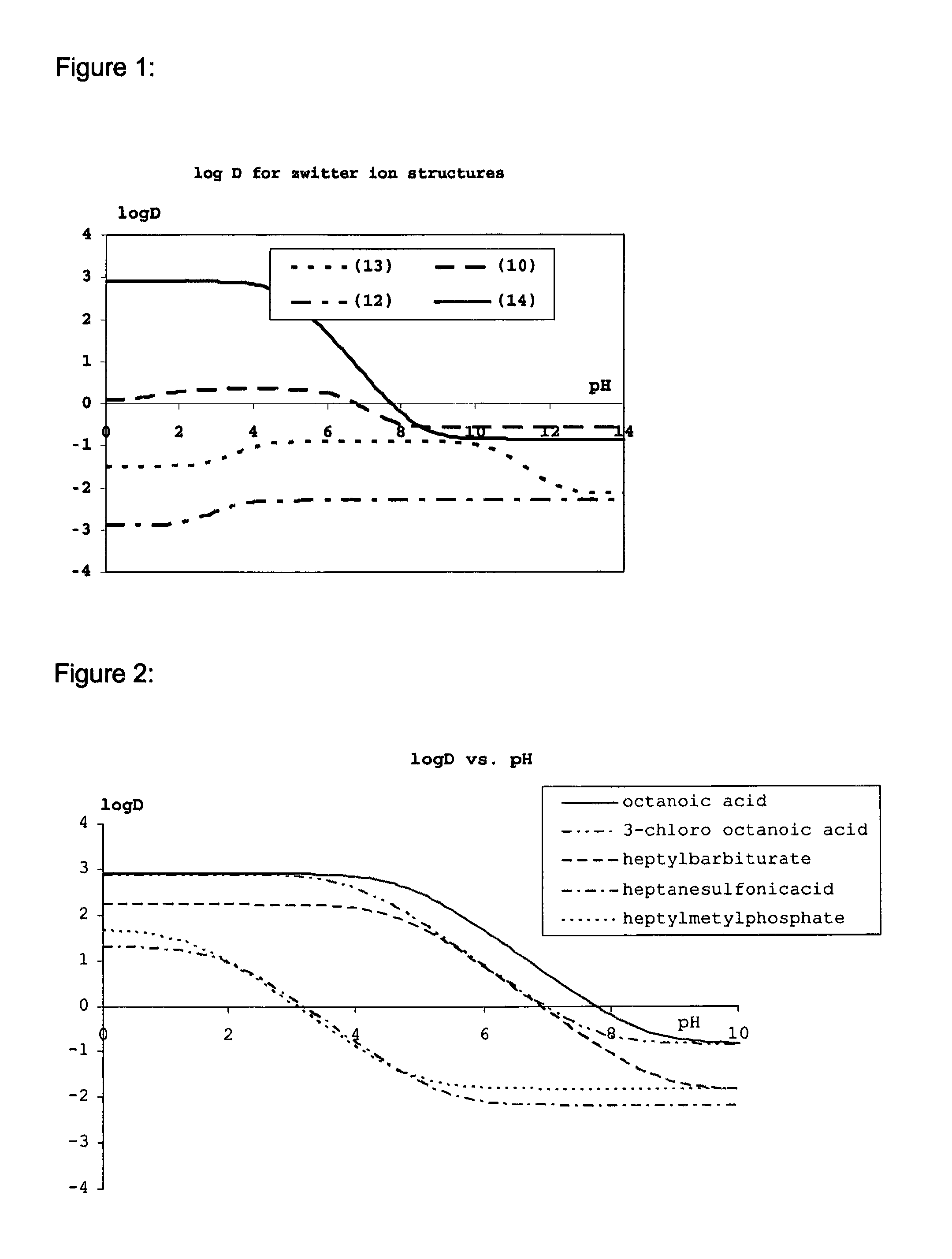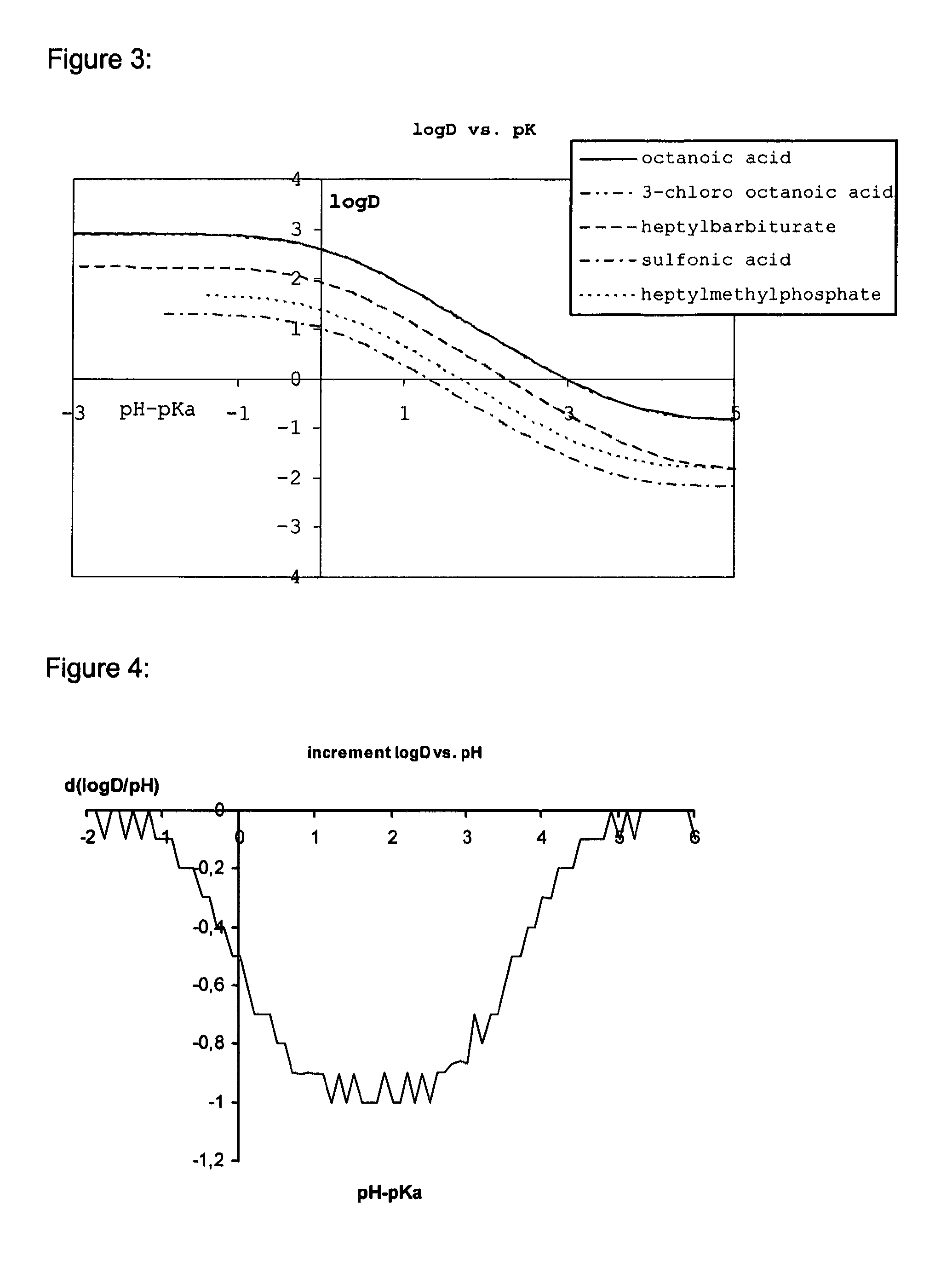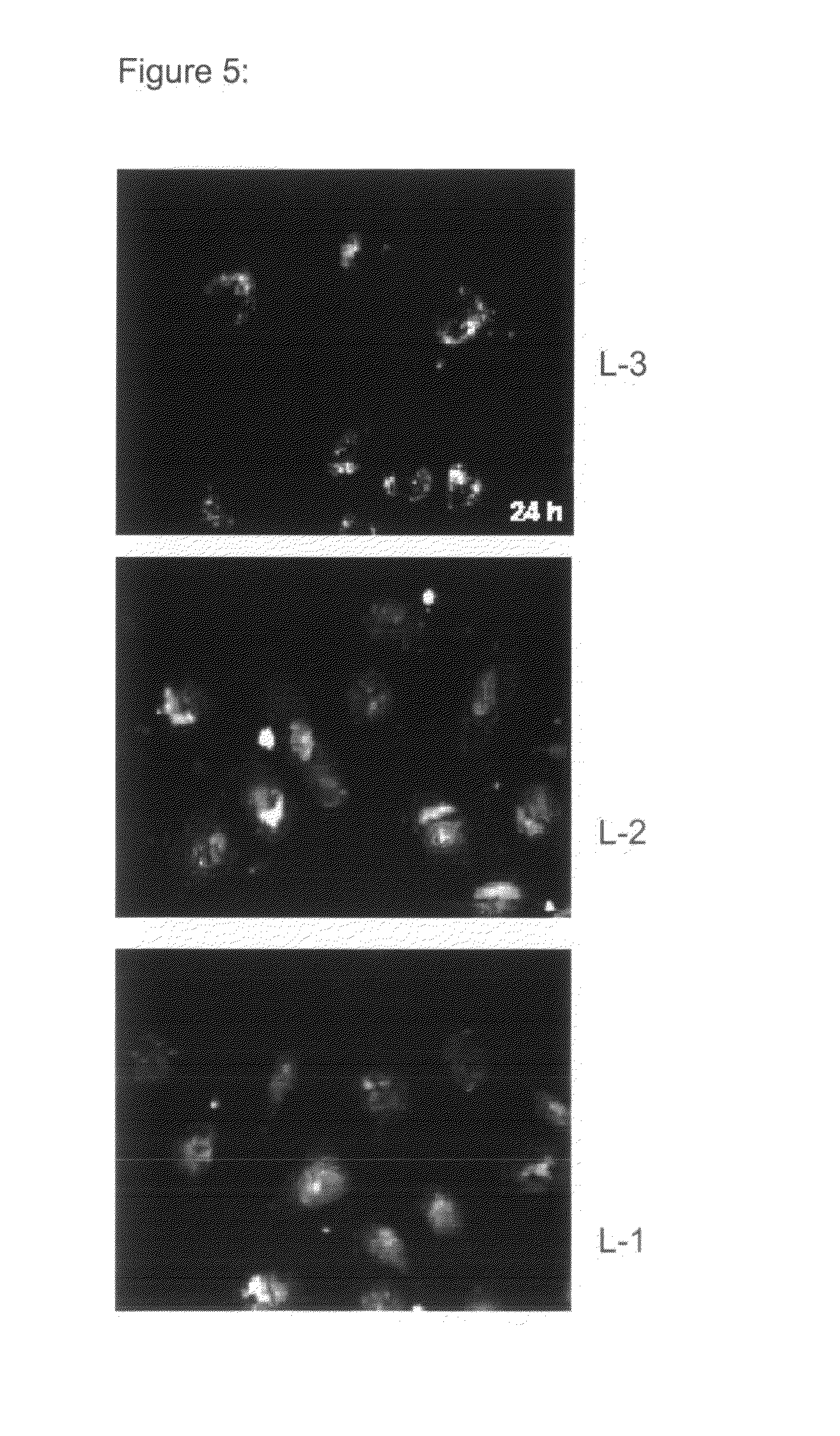Lipids and lipid assemblies comprising transfection enhancer elements
a technology of enhancer elements and lipids, applied in the field of lipids, can solve the problems of limited safety of these systems and consequently their applicability in humans, immune-related side effects, and lack of colloidal stability
- Summary
- Abstract
- Description
- Claims
- Application Information
AI Technical Summary
Benefits of technology
Problems solved by technology
Method used
Image
Examples
example 1
Synthesis of (16-{2-[2,3-Bis-hexadecanoyloxy-propoxy)-hydroxy-phosphoryl-oxy]-ethylamino}-hexadecanoic acid) (Pal-PE or w16-PE)
[0323]
[0324]First step (a): Oxidation of 16-Hydroxy-hexadecanoic acid to 16-Oxo-hexadecanoic acid 10 g of compound 1 (16-hydroxy-hexanoic acid) (1 eq.) was oxidized with 16 g PCC (Pyridinium chlorochromate) in 1000 ml dichloromethane under N2 atmosphere for 15 min at 40° C. The solvent was removed and the residue was resolved in acetic acid ethyl ester followed by a chromatography step on silica gel (eluent: acetic acid ethyl ester).
[0325]Second step (b): Reductive amination of compound 2 with dipalmitoyl phosphatidylethanolamine (DPPE)
[0326]Under N2 atmosphere 11.8 g of DPPE (3) and 16 g sodium cyano-boronhydride (NaCNBH3) were dissolved in 800 ml CHCl3 / CH3OH 1:1 and heated to 65° C. 9.44 g pyridine was added to the mixture. 4.6 g of compound 2 (16-oxo-hexadecanoic acid) was dissolved in 400 ml CHCl3 / CH3OH 1:1 and finally also added drop wise to the reactio...
example 2
Synthesis of compound (10-{2-[2,3-Bis-hexadecanoyloxy-propoxy)-hydroxy-phosphoryloxy]-ethylamino}-decanoic acid) (Deca-PE or w10-PE)
[0327]This synthesis was performed according to example 1 instead of using 10-Hydroxydecanoic acid in step a.
example 3
Preparation of Amphoteric Liposomes Encapsulating Cy3-Labelled Antisense Oligonucleotides
[0328]Following liposomal preparations were prepared as described below:
[0329]
TABLE 22Formulations L-1-L-5Formulation IDLipidsMol %L-1DOPE / MoChol / Chems / Pal-PE50:20:20:10L-2DOPE / MoChol / Chems / Deca-PE50:20:20:10L-3DOPE / MoChol / Chems50:20:30L-4POPC / DOPE / MoChol / Chems / Pal-PE12:38:20:20:10L-5POPC / DOPE / MoChol / Chems / Deca-PE12:38:20:20:10
[0330]Stock solutions of lipids in chloroform were mixed and finally evaporated in a round bottom flask to dryness under vacuum. Lipid films were hydrated with 1 ml Cy3-labelled antisense oligonucleotide solution in PBS pH 7.5 (0.5 mg / ml). The resulting lipid concentration was 50 mM. The suspensions were hydrated for 45 minutes in a water bath at room temperature, sonicated for 5 minutes following by three freeze / thaw cycles at −70° C. After thawing the liposomal suspensions were extruded 19 times through polycarbonate membranes with a pore size of 800 / 200 / 800 or 200 / 200 n...
PUM
| Property | Measurement | Unit |
|---|---|---|
| pKa | aaaaa | aaaaa |
| pKa | aaaaa | aaaaa |
| size | aaaaa | aaaaa |
Abstract
Description
Claims
Application Information
 Login to View More
Login to View More - R&D
- Intellectual Property
- Life Sciences
- Materials
- Tech Scout
- Unparalleled Data Quality
- Higher Quality Content
- 60% Fewer Hallucinations
Browse by: Latest US Patents, China's latest patents, Technical Efficacy Thesaurus, Application Domain, Technology Topic, Popular Technical Reports.
© 2025 PatSnap. All rights reserved.Legal|Privacy policy|Modern Slavery Act Transparency Statement|Sitemap|About US| Contact US: help@patsnap.com



